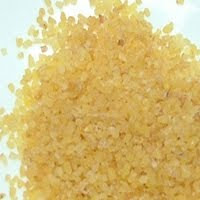
English: Jackfruit
Common Indian Name (Hindi): Kathal
- The Jackfruit is a species of tree in the mulberry family (Moraceae), which is native to parts of South and Southeast Asia. It is the national fruit of Bangladesh.
- In Bangla it is called as ‘Kathal’, in Kannada ‘Halasu’, in Malayalam ‘Chakka’, and in Marathi it is called as ‘Fanas’.
- It can be eaten unripe (young) or ripe, cooked or uncooked. Unripe (young) jackfruit may be eaten whole. Young jackfruit has a mild flavor and distinctive texture. The ripe fruits are sweet, cooling, laxative, aphrodisiac and tonic.
- Jack-fruit is rich in dietary fiber, which makes it a good bulk laxative. The fiber content helps to protect the colon mucous membrane by decreasing exposure time and as well as binding to cancer causing chemicals in the colon.
- The seeds of the fruit are edible, similar to chestnuts in taste. They are sweet, diuretic, aphrodisiac and constipating. They contain starches and dietary fiber.
- The Jackfruit is rich in antioxidant flavonoids like β-carotene and lutein. These antioxidants are found to be protective against colon, prostate, breast, endometrial, lung, and pancreatic cancers.
- It is one of the rare fruit that is rich in B-complex group of vitamins. It contains good amounts of vitamin B-6 (pyridoxine), niacin, riboflavin and folic acid.
- The flesh of the jackfruit is starchy and fibrous. It provides food energy and is a source of dietary fiber.
- The Jackfruit leaves are useful in fever, wounds and skin diseases. The ash of leaves, burned with corn and coconut shells, is used alone or mixed with coconut oil to heal ulcers.
- Chinese consider Jackfruit pulp and seeds tonic, cooling and nutritious, and to be "useful in overcoming the influence of alcohol on the system."




















